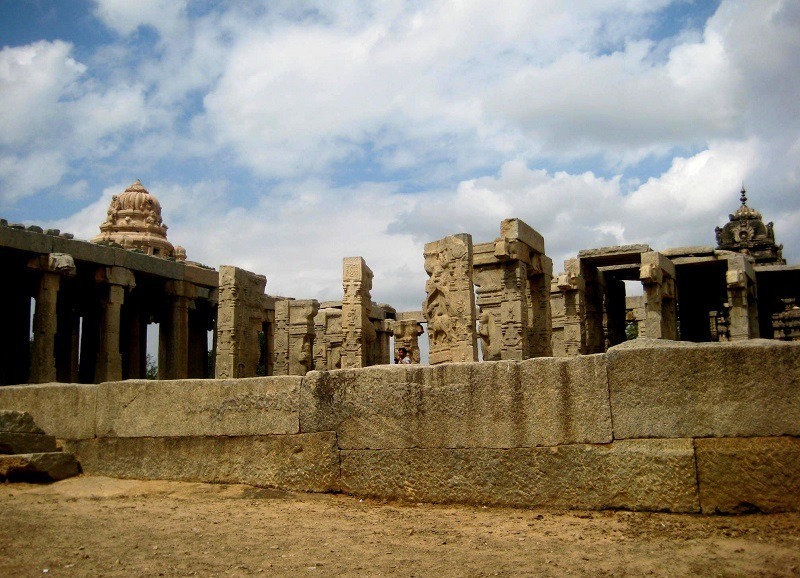
At a distance of 200 m from Lepakshi Bus Stand, The Mantapas are situated inside the Veerabhadra temple of Lepakshi.
The Veerabhadra temple is divided into three parts - the Mukha Mantapa (also called Natya Mantapa or Ranga Mantapa), the Artha Mantapa and Garbha Griha and the Kalyana Mantapa, with 38 carved monolithic pillars in grey sandstone.
The Lepakshi temple has been built in honor of Lord Veerabhadra. The Mukha Mantapa, the Artha Mantapa are the best parts of the temple in terms of architecture along with a large Kalyana Mandapa. The Artha Mandapa has been adorned with sculptured pillars depicting life-size musicians and dancers. The sculptures and the mural paintings in the Astha and Kalyana Mantapas are exceptional for their artistic beauty and skill. Most of these sculptures portray the mythological puranic episodes like Ananthasayana, Dattatreya, Chaturmukha Bramha, Tumburu, Narada and Rambha.
The mural Painting in the ceiling of Ardha Mantapa which is said to be Asia's largest, measures 23 x 13 ft. It has paintings of the 14 avatars of Lord Shiva. The presiding deity deified in the sanctum is a near life-size image of Veerabhadra, fully armed and decorated with skulls. There is a cave chamber in the sanctum where sage Agasthya is said to have lived when he installed the image of the Linga here.
Lepakshi Temple has a colossal painting of Veerabhadra in the central hall. There are eight panels, depicting Puranic legends on the ceiling. The paintings in each bay on the ceiling of the main mantapa, the antarala and other shrines, depict the grandeur of Vijayanagara art. They are painted over an initial plaster layer of lime mortar. The colour scheme consists of vegetable and mineral colours of yellow, ochre, black, blue and green blended with lime water; the background is generally painted in red colour. Most of the paintings and murals have been diminished over time.










